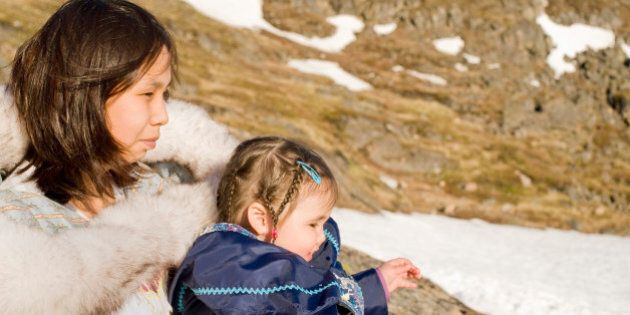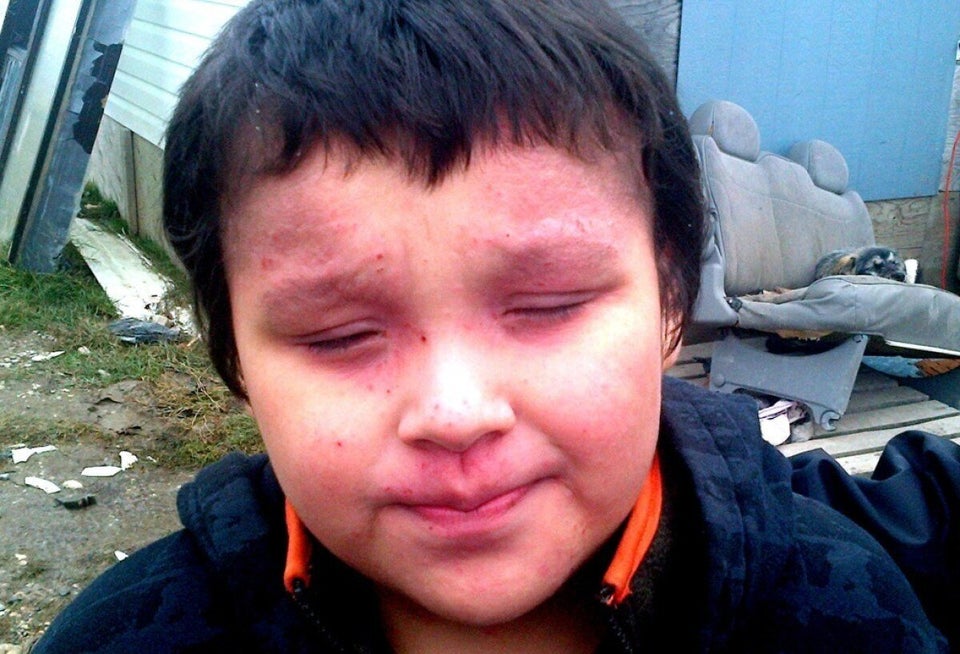
Aanii, hello, to all my non-Aboriginal relations. I am Chief Shining Turtle of the Sturgeon clan, of Whitefish River First Nation of the Anishinabe, which is near Sudbury.
I want to tell you a story about discrimination. It is a story that has been told for years by people living on reserves like the one where I live. It is also a story that has long been denied or ignored. Now a document prepared by federal bureaucrats has been released that describes -- in cold, analytic and precise terms -- the yawning gaps between social services provided to Aboriginal people living on reserves and everyone else.
The story goes like this:
Way back in 1995 -- when Québec almost separated, Paul Martin was in charge of the country's finances and the Royal Commission on Aboriginal Peoples was about to recommend a renewed respectful relationship between Canada and its native people -- Canada decided to put a 2 per cent cap on increases to spending on Aboriginal reserves for education, health and social services. No matter that inflation eats most of that growth, or that the aboriginal population has been growing at 5 per cent a year. The 2 per cent spending cap has remained in place in place to this day, 20 years later, which means every year each individual receives less and less funding.
Imagine raising a growing young family on the paltry interest of Canada Savings Bonds, and you get the picture.
Now compare the situation on reserves to what provinces spend on social services for everyone else. Provincial spending has grown at a much faster pace, at 3 or 5 or even 6 per cent every year. For example, the federal government increases its health transfer 6 per cent every year to the provinces, which allows provinces to keep up with rising costs and improve care.
Over time -- and, like I said, it has now been 20 years of this -- the gap between services on and off reserves has grown wider and wider. Every year, the difference compounds and the inequality becomes more and more grotesque. People living on reserves may seem like they live in a different world, but we are often literally your neighbours.
We are experiencing a slow motion march towards second-class citizenship. We're talking about billions of dollars that are not being spent on education for children, healthcare for the sick, and clean drinking water for all -- just because people are unlucky enough to be Aboriginal. This is wrong.
As you might guess, the people responsible for this discrimination have been reluctant to admit as much. Until now, that is. The extent of the gaps in spending on health, education and infrastructure are spelled out in a confidential draft report prepared by the Department of Aboriginal Affairs and Northern Development and Canada in June 2013.
Of course, the government did not release this report of its own accord. It was forced by a court because of an human rights complaint alleging discrimination.
The report details what it would take to provide "province-like services on reserve" (translation: "treat Aboriginal Canadians fairly"). The numbers are staggering. Let's just talk infrastructure spending, the money that builds homes, schools and drinking water systems. The report acknowledges a $8.2 billion gap between what is needed on reserves and what has been funded. (Keep in mind that the entire annual infrastructure budget for reserves is a total of $1 billion.) That includes $6 billion missing for adequate housing and $1.2 billion for safe drinking water.
Partly the infrastructure gap is so huge because of the funding divergence I described earlier. But there is also something else going on, which the report also admits. The federal government has been pilfering dollars from on-reserve infrastructure spending to meet urgent needs in education and social spending. Between 2006 and 2012, AANDC took $505 million from infrastructure budgets to cover shortfalls in education and social programs.
This is like robbing Peter to pay Paul. Now, on top of what is clearly a general pattern of discrimination, we have an infrastructure crisis because of many years of short-term sloshing from one nearly empty pot to another.
Right now, a committee of Senators, led by Dennis Patterson, is travelling across Canada to document the state of infrastructure on reserves. They are seeing and hearing a harsh reality -- the situation is not pretty.
For example, many aboriginal Canadians cannot access safe and clean water. In addition to systemic federal under-funding for water systems, the federal government has been applying lower standards for these water systems than their provincial counterparts for decades. When federal planners set up water systems in my own community, they built a system that supplies far less water than the province requires. In 2011, an assessment of reserve water systems commissioned by the Canadian government found that 39 per cent of all on reserve drinking water systems across the country have major deficiencies that result in a high probability of unsafe water.
A group of six First Nations recently began a lawsuit claiming that Canada's failure to ensure safe drinking water on reserves violates their Charter rights. They say that lack of access to safe drinking water is a threat to their lives and security. They say that it is a violation to the right of equal treatment before the law. I believe they are right. And I believe that the unjustifiable cap on social and health funding for on reserve communities is also a threat to our lives and security, and violates the Crown's most basic ethical and moral (not to mention legal) obligations.
Aboriginal people on reserves are asking for comparable services as other Canadians. This is not too much to demand.
ALSO ON HUFFPOST:
